| Listing 1 - 8 of 8 |
Sort by
|

ISBN: 0812231619 1512809357 0585113769 Year: 1993 Volume: *29 Publisher: Philadelphia University of Pennsylvania Press
Abstract | Keywords | Export | Availability | Bookmark
 Loading...
Loading...Choose an application
- Reference Manager
- EndNote
- RefWorks (Direct export to RefWorks)
Animals in literature --- Animals in poetry --- Animaux dans la littérature --- Animaux dans la poésie --- Beast epic --- Dieren in de literatuur --- Dieren in de poëzie --- Dierenepiek --- Dierenepos --- Dierenfabels --- Dierenromans --- Dierensprookjes --- Dierenverhalen --- Epopées animales --- Fables ésopiques --- Latin poetry, Medieval and modern --- -Animals in literature --- Latin literature, Medieval and modern --- History and criticism --- Latin poetry [Medieval and modern ] --- Poetry as Topic --- Literature, Medieval. --- Animals. --- Animals in literature. --- Animal Population Groups. --- Poetry --- Greek & Latin Languages & Literatures --- Languages & Literatures --- Latin. --- History and criticism. --- Animalia --- Animal --- Metazoa --- Medieval Literature --- Literatures, Medieval --- Medieval Literatures --- Animal Population Group --- Population Group, Animal --- Population Groups, Animal --- Zoology
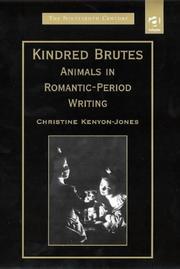
Abstract | Keywords | Export | Availability | Bookmark
 Loading...
Loading...Choose an application
- Reference Manager
- EndNote
- RefWorks (Direct export to RefWorks)
Animals in literature --- Animals in poetry --- Animaux dans la littérature --- Animaux dans la poésie --- Beast epic --- Dieren in de literatuur --- Dieren in de poëzie --- Dierenepiek --- Dierenepos --- Dierenfabels --- Dierenromans --- Dierensprookjes --- Dierenverhalen --- Epopées animales --- Evolutie (Biologie) in de literatuur --- Evolution (Biologie) dans la littérature --- Evolution (Biology) in literature --- Fables ésopiques --- Human-animal relationships in literature --- Man-animal relationship in literature --- Mens-dier relaties in de literatuur --- Relations homme-animal dans la litérature --- English literature --- -Evolution (Biology) in literature --- Romanticism --- -Pseudo-romanticism --- Romanticism in literature --- Aesthetics --- Fiction --- Literary movements --- British literature --- Inklings (Group of writers) --- Nonsense Club (Group of writers) --- Order of the Fancy (Group of writers) --- History and criticism --- Darwin, Charles --- -Influence --- -History and criticism --- Darwin, Charles, --- Darwin, Charles, Robert --- Influence. --- Darwin, Charles Robert --- Influence --- 19th century --- Great Britain
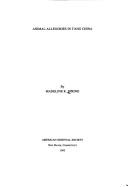
ISBN: 0940490765 Year: 1993 Volume: 76 Publisher: New Haven (Conn.): American oriental society
Abstract | Keywords | Export | Availability | Bookmark
 Loading...
Loading...Choose an application
- Reference Manager
- EndNote
- RefWorks (Direct export to RefWorks)
S16/0195 --- S11/0607 --- S16/0223 --- S16/0416 --- Chinese literature --- -Animals in literature --- Allegory --- Personification in literature --- Symbolism in literature --- Signs and symbols in literature --- Symbolism in folk literature --- Pathetic fallacy --- China: Literature and theatrical art--Thematic studies --- China: Social sciences--Symbols --- China: Literature and theatrical art--Poetry: Tang --- China: Literature and theatrical art--Traditional novels: Pre-Tang and Tang: studies, texts and translations --- History and criticism --- Allegories --- Allegorieën --- Allégories --- Animals in literature --- Animals in poetry --- Animaux dans la littérature --- Animaux dans la poésie --- Beast epic --- Dieren in de literatuur --- Dieren in de poëzie --- Dierenepiek --- Dierenepos --- Dierenfabels --- Dierenromans --- Dierensprookjes --- Dierenverhalen --- Epopées animales --- Fables ésopiques --- Personificatie in de literatuur --- Personnification dans la littérature --- Symboliek in de literatuur --- Symbolisme dans la littérature --- Tang dynasty, 618-907
Book
ISBN: 0521470269 Year: 1995 Volume: *2 Publisher: Cambridge New York Cambridge University Press
Abstract | Keywords | Export | Availability | Bookmark
 Loading...
Loading...Choose an application
- Reference Manager
- EndNote
- RefWorks (Direct export to RefWorks)
Animal painting and illustration --- Animals in art --- Animals in literature --- Animals in poetry --- Animaux [Peinture et illustration d' ] --- Animaux dans l'art --- Animaux dans la littérature --- Animaux dans la poésie --- Art [Animaux dans l' ] --- Beast epic --- Dieren in de kunst --- Dieren in de literatuur --- Dieren in de poëzie --- Dierenepiek --- Dierenepos --- Dierenfabels --- Dierenromans --- Dierenschilderkunst en -illustratie --- Dierensprookjes --- Dierenverhalen --- Enluminure des livres et des manuscrits anglaise --- Epopées animales --- Fables ésopiques --- Illumination of books and manuscripts [English ] --- Kunst [Dieren in de ] --- Pets in art --- Verluchting van boeken en handschriften [Engelse ] --- Zoo animals in art --- 091:59 --- 091.31:7.04 --- Anglo-Norman literature --- -Animals in art --- Bestiaries --- -Bestiaries --- -English literature --- -Illumination of books and manuscripts, English --- Manuscripts, Medieval --- -Illumination of books and manuscripts, Medieval --- -Latin literature, Medieval and modern --- -Painting, Medieval --- Medieval manuscripts --- Manuscripts --- English illumination of books and manuscripts --- British literature --- Inklings (Group of writers) --- Nonsense Club (Group of writers) --- Order of the Fancy (Group of writers) --- Illustrated books --- Wild animals in art --- French literature --- Handschriftenkunde. Handschriftencatalogi-:-Zoologie. Dierkunde --- Verluchte handschriften: iconografie --- History and criticism --- Illustrations --- History --- Criticism , Textual --- -Handschriftenkunde. Handschriftencatalogi-:-Zoologie. Dierkunde --- 091.31:7.04 Verluchte handschriften: iconografie --- 091:59 Handschriftenkunde. Handschriftencatalogi-:-Zoologie. Dierkunde --- -English illumination of books and manuscripts --- Painting, Medieval --- English literature --- Illumination of books and manuscripts, English --- Illumination of books and manuscripts, Medieval --- Latin literature, Medieval and modern --- Middle English, 1100-1500 --- Latin literature [Medieval and modern ] --- England --- Manuscripts [Medieval ] --- Illumination of books and manuscripts [Medieval ] --- Illumination of books and manuscripts, Medieval - England. --- Bestiaries - Illustrations.
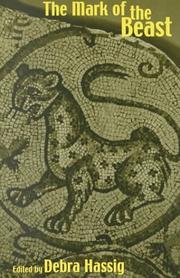

ISBN: 041592894X 0815329520 9780415928946 9780815329527 Year: 1999 Volume: 22 2076 Publisher: New York Garland
Abstract | Keywords | Export | Availability | Bookmark
 Loading...
Loading...Choose an application
- Reference Manager
- EndNote
- RefWorks (Direct export to RefWorks)
Animal painting and illustration --- Animals [Mythical ] in art --- Animals [Mythical ] in literature --- Animals in literature --- Animals in poetry --- Animaux [Peinture et illustration d' ] --- Animaux dans l'art --- Animaux dans la littérature --- Animaux dans la poésie --- Animaux mythiques dans l'art --- Animaux mythiques dans la litterature --- Art [Animaux dans l' ] --- Beast epic --- Dieren [Mythische ] in de kunst --- Dieren [Mythische ] in de literatuur --- Dieren in de kunst --- Dieren in de literatuur --- Dieren in de poëzie --- Dierenepiek --- Dierenepos --- Dierenfabels --- Dierenromans --- Dierenschilderkunst en -illustratie --- Dierensprookjes --- Epopées animales --- Fables ésopiques --- Kunst [Dieren in de ] --- Pets in art --- Zoo animals in art --- Animals, Mythical, in literature --- Bestiaries --- Animals, Mythical, in art --- 7.046.2 --- 7.042 --- Wild animals in art --- Iconografie: legendarische-, fantastische voorstellingen --- Animals in art. --- Animals in literature. --- Animals, Mythical, in art. --- Animals, Mythical, in literature. --- 7.046.2 Iconografie: legendarische-, fantastische voorstellingen --- 091.31:7.04 --- 82 "04/14" --- Animals in art --- -Literature, Medieval --- -Didactic literature, Latin (Medieval and modern) --- Latin didactic literature, Medieval and modern --- European literature --- Medieval literature --- 091.31:7.04 Verluchte handschriften: iconografie --- Verluchte handschriften: iconografie --- 82 "04/14" Literatuur. Algemene literatuurwetenschap--Middeleeuwen --- Literatuur. Algemene literatuurwetenschap--Middeleeuwen --- History and criticism --- Didactic literature, Latin (Medieval and modern) --- Literature, Medieval --- History of civilization --- Thematology --- Iconography --- History and criticism. --- Didactic literature [Latin ] (Medieval and modern) --- Literature [Medieval ] --- Literature, Medieval - History and criticism --- Bestiaries - History and criticism
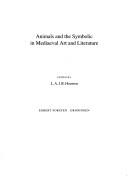
ISBN: 9069800977 9789069800974 Year: 1997 Volume: 20 Publisher: Groningen Forsten
Abstract | Keywords | Export | Availability | Bookmark
 Loading...
Loading...Choose an application
- Reference Manager
- EndNote
- RefWorks (Direct export to RefWorks)
Animal painting and illustration --- Animals [Mythical ] in art --- Animals [Mythical ] in literature --- Animals in art --- Animals in literature --- Animals in poetry --- Animaux [Peinture et illustration d' ] --- Animaux dans l'art --- Animaux dans la littérature --- Animaux dans la poésie --- Animaux mythiques dans l'art --- Animaux mythiques dans la litterature --- Art [Animaux dans l' ] --- Beast epic --- Dieren [Mythische ] in de kunst --- Dieren [Mythische ] in de literatuur --- Dieren in de kunst --- Dieren in de literatuur --- Dieren in de poëzie --- Dierenepiek --- Dierenepos --- Dierenfabels --- Dierenromans --- Dierenschilderkunst en -illustratie --- Dierensprookjes --- Dierenverhalen --- Epopées animales --- Fables ésopiques --- Kunst [Dieren in de ] --- Pets in art --- Symboliek in de literatuur --- Symbolism in literature --- Symbolisme dans la littérature --- Zoo animals in art --- Animals, Mythical, in literature --- Animals, Mythical, in art --- 7.046.2 --- 7.042 --- Iconografie: legendarische-, fantastische voorstellingen --- Iconografie: allegorieen; symbolen; dodendansen; emblemata --- 7.045 Iconografie: allegorieen; symbolen; dodendansen; emblemata --- 7.046.2 Iconografie: legendarische-, fantastische voorstellingen --- Literature, Medieval --- 7.045 --- Signs and symbols in literature --- Symbolism in folk literature --- Wild animals in art --- History and criticism --- Thematology --- Iconography --- Zoology --- anno 500-1499 --- Literature [Medieval ] --- Literature, Medieval - History and criticism
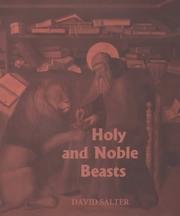
ISBN: 0859916243 9780859916240 Year: 2001 Publisher: Cambridge : D. S. Brewer,
Abstract | Keywords | Export | Availability | Bookmark
 Loading...
Loading...Choose an application
- Reference Manager
- EndNote
- RefWorks (Direct export to RefWorks)
Because animals are neither wholly similar to, nor entirely different from, human beings, they have provided men and women with an endlessly fruitful point of departure from which to explore what it means to be human. The way in which human identity is inextricably bound up with the animal kingdom is particularly evident in medieval hagiography and romance (arguably the two most popular and prestigious genres of medieval literature), where the holiness of saints and the heroism of knights is frequently revealed through their miraculous encounters with wild beasts. Through an analysis of these literary sources, the book explores the broad range of attitudes towards animals and the natural world that were current in western Europe during the later middle ages. It argues that through their depictions of animals, medieval writers were not only able to reflect upon their own humanity, but were also able to explore the meaning of more abstract values and ideas (such as civility, sanctity and nobility) that were central to the culture of the time. Dr DAVID SALTER is a Lecturer in English at the University of Edinburgh.
Animals in literature --- Animals in poetry --- Animaux dans la littérature --- Animaux dans la poésie --- Beast epic --- Chevaliers et chevalerie dans la littérature --- Christelijke heiligen in de literatuur --- Christian saints in literature --- Dieren in de literatuur --- Dieren in de poëzie --- Dierenepiek --- Dierenepos --- Dierenfabels --- Dierenromans --- Dierensprookjes --- Dierenverhalen --- Epopées animales --- Fables ésopiques --- Knights and knighthood in literature --- Ridders en ridderschap in de literatuur --- Saints chrétiens dans la littérature --- English literature --- Christian literature, English (Middle) --- Romances, English --- Littérature anglaise --- Littérature chrétienne anglaise (moyen anglais) --- Roman courtois anglais --- History and criticism --- History and criticism. --- Histoire et critique --- Alexander, --- Romances --- -Christian saints in literature --- -Knights and knighthood in literature --- -English romances --- British literature --- Inklings (Group of writers) --- Nonsense Club (Group of writers) --- Order of the Fancy (Group of writers) --- Bibliography --- Alexander the Great --- -Romances --- -History and criticism --- -Alexander --- Alexander der Große --- Alexandre le Grand --- Alejandro Magno --- Alexander de Grote --- Littérature anglaise --- Animaux dans la littérature --- Littérature chrétienne anglaise (moyen anglais) --- Chevaliers et chevalerie dans la littérature --- Saints chrétiens dans la littérature --- Christian hagiography --- History --- Alejandro, --- Alekjhāṇḍara, --- Aleksandar, --- Aleksander, --- Aleksandr, --- Alekʻsandre, --- Aleksandros bar Filipos, --- Aleksandŭr, Makedonski, --- Alessandro, --- Alexander --- Alexandre, --- Alexandros --- Alexandros, --- Alexandros, Megalos, --- Alexandru, --- Alexantros, --- Aleksandŭr, --- Александър, --- Iskandar, --- Maḳdonya, Aleksandros bar Filipos, --- Makedonski, Aleksandŭr, --- Македонски, Александър, --- Megalexandros, --- Megas Alexandros, --- Nagy Sándor, --- Sikandar, --- Iskender, --- Μέγας Ἀλέξανδρος, --- Ἀλέξανδρος, --- Ἀλέξανδρος --- אלכסנדר בן פיליפוס, --- אלכסנדר, --- اسكندر كبير --- اسکندر اعظم --- سکندراعظم --- Middle English, 1100-1500 --- Christian literature [English ] (Middle) --- Romances [English ] --- Animals in literature. --- Knights and knighthood in literature. --- Christian saints in literature. --- Christian hagiography. --- Christian literature, English (Middle). --- Romances. --- Romances, English. --- Middelengels. --- Dieren. --- Literaire thema's. --- Ridders. --- Heiligen. --- Literatur. --- Mittelenglisch. --- Tiere --- Middle English. --- To 1500. --- Littérature médiévale --- Animaux --- 1100-1500 (moyen anglais) --- Thèmes, motifs --- Dans la littérature
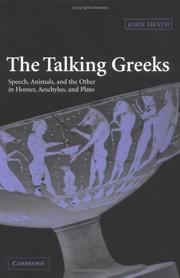
ISBN: 0521832640 9780521832649 9780511483011 9780521117784 0511111134 9780511111136 0511111460 9780511111464 0511483015 1280415584 9781280415586 052111778X 1107139309 9781107139305 0511181329 9780511181320 0511197950 9780511197956 0511299060 9780511299063 Year: 2005 Publisher: Cambridge Cambridge University Press
Abstract | Keywords | Export | Availability | Bookmark
 Loading...
Loading...Choose an application
- Reference Manager
- EndNote
- RefWorks (Direct export to RefWorks)
When considering the question of what makes us human, the ancient Greeks provided numerous suggestions. This book argues that the defining criterion in the Hellenic world, however, was the most obvious one: speech. It explores how it was the capacity for authoritative speech which was held to separate humans from other animals, gods from humans, men from women, Greeks from non-Greeks, citizens from slaves, and the mundane from the heroic. John Heath illustrates how Homer's epics trace the development of immature young men into adults managing speech in entirely human ways and how in Aeschylus' Oresteia only human speech can disentangle man, beast, and god. Plato's Dialogues are shown to reveal the consequences of Socratically imposed silence. With its examination of the Greek focus on speech, animalization, and status, this book offers new readings of key texts and provides significant insights into the Greek approach to understanding our world.
Animals in literature --- Animals in poetry --- Animaux dans la littérature --- Animaux dans la poésie --- Beast epic --- Dieren in de literatuur --- Dieren in de poëzie --- Dierenepiek --- Dierenepos --- Dierenfabels --- Dierenromans --- Dierensprookjes --- Dierenverhalen --- Dieux grecs dans la littérature --- Difference (Psychology) in literature --- Differentie (Psychologie) in de literatuur --- Différence (Psychologie) dans la littérature --- Epopées animales --- Etres humains dans la littérature --- Fables ésopiques --- Goden [Griekse ] in de literatuur --- Gods [Greek ] in literature --- Human beings in literature --- Human-animal relationships in literature --- Language and languages in literature --- Langue et langues dans la littérature --- Man-animal relationship in literature --- Mens-dier relaties in de literatuur --- Mensen in de literatuur --- Parole (Linguistique) dans la littérature --- Relations homme-animal dans la litérature --- Speech in literature --- Spraak in de literatuur --- Taal en talen in de literatuur --- Greek literature --- Speech in literature. --- Human-animal relationships in literature. --- Difference (Psychology) in literature. --- Language and languages in literature. --- Gods, Greek, in literature. --- Human beings in literature. --- Animals in literature. --- Littérature grecque --- Parole dans la littérature --- Relations homme-animal dans la littérature --- Psychologie différentielle dans la littérature --- Langage et langues dans la littérature --- Homme dans la littérature --- History and criticism. --- Histoire et critique --- Aeschylus --- Homer --- Plato --- Littérature grecque --- Parole dans la littérature --- Relations homme-animal dans la littérature --- Psychologie différentielle dans la littérature --- Langage et langues dans la littérature --- Dieux grecs dans la littérature --- Homme dans la littérature --- Animaux dans la littérature --- Plato. --- Gods, Greek, in literature --- Man in literature --- History and criticism --- Aflāṭūn --- Aplaton --- Bolatu --- Platon, --- Platonas --- Platone --- Po-la-tʻu --- Pʻŭllatʻo --- Pʻŭllatʻon --- Pʻuratʻon --- Πλάτων --- אפלטון --- פלאטא --- פלאטאן --- פלאטו --- أفلاطون --- 柏拉圖 --- 플라톤 --- Homeros --- Homère --- Aischylos --- Eschilo --- Eschyle --- Eschylus --- Criticism and interpretation. --- Homerus --- Platon --- Platoon --- Criticism and interpretation --- Hóiméar --- Hūmīrūs --- Gomer --- Omir --- Omer --- Omero --- Ho-ma --- Homa --- Homérosz --- האמער --- הומירוס --- הומר --- הומרוס --- هومر --- هوميروس --- 荷马 --- Ὅμηρος --- Гамэр --- Hamėr --- Омир --- Homero --- 호메로스 --- Homerosŭ --- Homērs --- Homeras --- Хомер --- ホメーロス --- ホメロス --- Гомер --- Homeri --- Hema --- Pseudo-Homer --- Pseudo Omero --- Homer. --- Aeschylus. --- Платон --- プラトン --- Eskhil --- Esquilo --- Aiskhilos --- Eshil --- Æskílos --- Ajschylos --- Eschil --- Esḳilos --- Äschylos --- Eskili --- Aiszkhülosz --- Eschylos --- Iskilos --- Эсхил --- אייסכילוס --- איסכילאס --- איסכילוס --- إيسخولوس --- ايسخيلوس --- Αἰσχύλος --- Arts and Humanities --- History
| Listing 1 - 8 of 8 |
Sort by
|

 Search
Search Feedback
Feedback About UniCat
About UniCat  Help
Help News
News